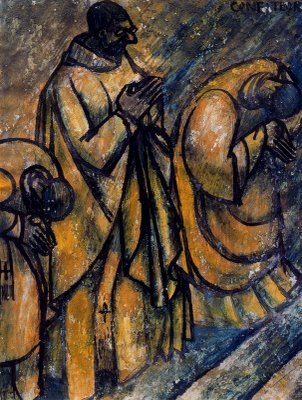December 25th
This martyr enjoys the distinction, unique in the Roman liturgy, of having a special commemoration in the second Mass on Christmas day. This Mass was originally celebrated not in honour of the birth of Christ, but in commemoration of this martyr, and towards the end of the fifth century her name was also inserted in the Roman canon of the Mass. Nevertheless, she is not a Roman saint, for she suffered martyrdom at Sirmium (near the modern town of Mitrovitz in Slavonia), and was not venerated at Rome until almost the end of the fifth century. All that is certain about her life and passion is that she was martyred for the faith in Sirmium, that her name was Anastasia, and that her memory was kept sacred in that church.
The relics of the martyr were translated to Constantinople, to a church which had hitherto been known as "Anastasis" Greek for the. Resurrection, thereafter that particular church took the name of the St. Anastasia. The devotion and “cultus” of St. Anastasia was similarly introduced into Roman from Sirmium by means of an already existing church. There existed in Rome from the fourth century, at the foot of the Palatine hill and above the Circus Maximus, a church which had been adorned by Pope St. Damasus (366-384) with a large mosaic. It was known as the "titulus Anastasix", and is mentioned as such in the Acts of the Roman Council of 499. Due to the already existing celebrity of this church, it brought the feast of the saint into especial prominence.
The insertion of St. Anastasias name into the Roman Canon of the Mass occurred toward the end of the fifth century, and shows that she had by that time already occupied a unique position among the saints publicly venerated at Rome. The church on the Palatine has since this time been known as the "titulus sanctx Anastasix", and the martyr of Sirmium became the titular saint of the old fourth-century basilica. Evidently because of its position as the titular church of the district of the Palatine hill (at the center of Rome) which included the imperial dwellings this church long maintained an eminent rank among the churches of Rome; only two churches preceded it in honor: St. John Lateran, the mother-church, and Cathedral of Rome, and the Basilica of St. Mary Major. This ancient sanctuary stands today quite isolated amid the ruins of Rome. The commemoration of St. Anastasia in the second Mass on Christmas day is the last remnant of the former prominence enjoyed by this saint and her church in the life of Christian Rome.



No comments:
Post a Comment